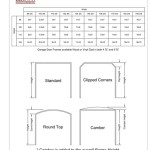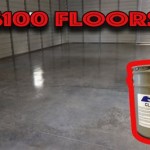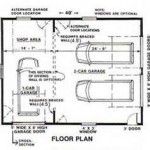Craftsman Garage Door Opener Problems In Cold Weather Conditions
Craftsman garage door openers are a popular choice for homeowners due to their reliability and affordability. However, like all mechanical devices, they can be susceptible to problems, especially in cold weather conditions. Understanding the potential issues and their causes is crucial for maintaining the functionality of a Craftsman garage door opener during winter months and preventing costly repairs.
The operational mechanics of a garage door opener rely on a complex interplay of electrical and mechanical components. Extreme temperatures, particularly cold, can significantly impact the performance of these components, leading to a variety of operational difficulties. These problems can range from sluggish movement to complete failure of the opener.
This article will explore some of the common Craftsman garage door opener problems encountered during cold weather, analyze the underlying causes, and provide insights into preventative measures and troubleshooting techniques. Addressing these issues promptly can ensure the longevity and reliable operation of the garage door opener even in harsh weather conditions.
Lubrication Issues in Cold Weather
One of the most prevalent issues affecting Craftsman garage door openers in cold weather is the thickening of lubricants. Garage door openers rely on lubrication to facilitate smooth movement of various mechanical parts, including the chain or belt drive, rollers, hinges, and springs. Standard lubricants often contain mineral oil, which can become viscous and sluggish at low temperatures. This increased viscosity creates significant friction, requiring the motor to exert more force to operate the door.
The added strain on the motor can lead to overheating and potentially premature failure. Furthermore, the increased friction can cause excessive wear and tear on other components, reducing their lifespan and increasing the likelihood of breakdowns. The thickening of lubricant can also cause the door to move unevenly or jerkily, creating unnecessary stress on the door itself and potentially leading to damage.
To mitigate lubrication problems in cold weather, it is crucial to use a low-temperature lubricant specifically designed for garage door openers. These lubricants typically contain synthetic oils that remain fluid at lower temperatures, ensuring smooth operation even in sub-freezing conditions. Applying lubricant regularly to all moving parts, according to the manufacturer's recommendations, is essential for maintaining optimal performance. It is also advisable to clean off any old, hardened grease before applying fresh lubricant.
The type of lubricant used is also crucial. Avoid using WD-40 as a long-term lubricant. While it can loosen stuck parts, it is primarily a solvent and evaporates quickly, leaving the parts vulnerable to rust and increased friction. Opt for a lithium-based grease or a silicone-based lubricant designed for garage door applications. These lubricants provide better protection and last longer, especially in cold temperatures. Regular inspections of the lubrication levels are also recommended, particularly before and during periods of prolonged cold weather.
Sensor Misalignment and Obstruction
Craftsman garage door openers, like most modern openers, are equipped with safety sensors designed to prevent the door from closing on an obstruction. These sensors, typically located near the floor on either side of the door opening, use an invisible beam of light to detect objects in the door's path. If the beam is interrupted, the opener is designed to reverse the door's direction, preventing potential injury or damage.
In cold weather, several factors can contribute to sensor misalignment or obstruction. Ice and snow accumulation can block the sensor beams, preventing them from communicating properly. Condensation can form on the sensor lenses, obscuring the beam and causing false readings. Furthermore, temperature fluctuations can cause the ground to shift, leading to slight misalignment of the sensors. Even a minor misalignment can trigger the safety mechanism, preventing the door from closing.
Troubleshooting sensor-related issues in cold weather requires careful inspection and cleaning. First, thoroughly remove any ice or snow that may be blocking the sensors. Use a soft, dry cloth to clean the sensor lenses, removing any condensation or debris. Ensure that the sensors are securely mounted and properly aligned. Refer to the owner's manual for instructions on adjusting the sensor alignment. In some cases, professional assistance may be required to properly realign the sensors, particularly if the ground has shifted significantly.
To prevent future sensor problems, consider installing sensor shields to protect them from the elements. These shields can help prevent ice and snow buildup, reducing the likelihood of obstructions. Regularly inspecting and cleaning the sensors, particularly after periods of inclement weather, is crucial for maintaining their functionality. Ensure the sensor wires are properly connected and not damaged, as cold can sometimes cause wires to become brittle and break.
Battery Performance in Remote Controls and Keypads
Wireless remote controls and keypads are integral components of many Craftsman garage door opener systems, providing convenient access to the garage. However, the batteries powering these devices are susceptible to performance degradation in cold weather. Batteries rely on chemical reactions to produce electricity, and these reactions slow down significantly at low temperatures. This reduced chemical activity can lead to a decrease in battery voltage, resulting in weak or intermittent signals.
When the battery voltage drops, the remote control or keypad may not be able to transmit a strong enough signal to activate the garage door opener. This can manifest as a delayed response, requiring multiple button presses, or a complete failure to operate the door. In some cases, the remote may work intermittently, functioning properly at times but failing at others, making it difficult to diagnose the problem.
To address battery-related issues in cold weather, it is recommended to use high-quality lithium batteries specifically designed for cold-weather performance. Lithium batteries generally maintain their voltage levels more consistently than alkaline batteries in low temperatures. Replacing the batteries regularly, typically every six months to a year, can also prevent performance degradation. Keep spare batteries readily available, especially during the winter months.
As an alternative, consider relocating the keypad, if possible, to a more sheltered location where it is less exposed to the elements. If the keypad is wired, check the wiring for any damage or corrosion, as cold weather can exacerbate existing connection problems. For remote controls, keeping them in a warm location, such as inside the vehicle or house, can help maintain battery performance. If persistent battery problems occur even after replacing the batteries with high-quality ones, it is possibly an internal issue with the remote or keypad that may require professional repair or replacement.
Door Track and Roller Issues
The garage door's smooth movement depends heavily on the condition of the tracks and rollers. Cold weather can significantly impact these components, leading to operational problems. Metal contracts in cold temperatures, potentially causing the door tracks to become tighter and restrict the movement of the rollers. Ice and snow can accumulate within the tracks, creating further resistance and hindering the door's smooth operation.
Furthermore, moisture can cause the rollers and tracks to corrode, further increasing friction and making it difficult for the door to move. In extreme cases, the rollers can become completely frozen within the tracks, preventing the door from opening or closing. Forced operation of the door in such conditions can damage the door, tracks, rollers, or the opener itself.
Preventive maintenance is essential for minimizing track and roller problems in cold weather. Regularly inspect the tracks for any signs of damage, such as dents or bends. Clean the tracks thoroughly, removing any debris, ice, or snow. Lubricate the rollers and tracks with a silicone-based lubricant that is designed for cold weather use. Avoid using grease, as it can attract dirt and debris, further exacerbating the problem. Ensure that the rollers are properly aligned and roll smoothly within the tracks.
If the door becomes stuck due to ice or frozen rollers, avoid forcing it open. Use a heat gun or hairdryer to gently melt the ice. Avoid using boiling water, as it can refreeze quickly and cause further problems. Once the ice is melted, lubricate the rollers and tracks thoroughly. If the problem persists, it may be necessary to replace the rollers or adjust the tracks. Consider upgrading to nylon rollers, as they are less susceptible to corrosion and tend to operate more smoothly in cold weather compared to steel rollers. Periodically check the track mounting brackets to ensure they are securely fastened to the wall, as loose brackets can cause the tracks to misalign and hinder smooth door operation.

How To Fix Cold Weather Garage Door Problems Quality Overhead

Keep Your Garage Door Working This Winter Ae Window

6 Garage Door Opener Cold Weather Problems Their Solutions Sti

6 Garage Door Opener Cold Weather Problems Their Solutions Sti

My Garage Door Won T Close When It S Cold Action

5 Reasons Your Garage Door Won T Open In Cold Weather Diy Fixes

Fixing Garage Door Problems During Cold Weather Winter

The Garage Door Will Not Close In Cold Weather Repair San Antonio

How To Fix Cold Weather Garage Door Problems Quality Overhead

How Does Winter Affect Your Garage Door Quality Overhead
Related Posts








